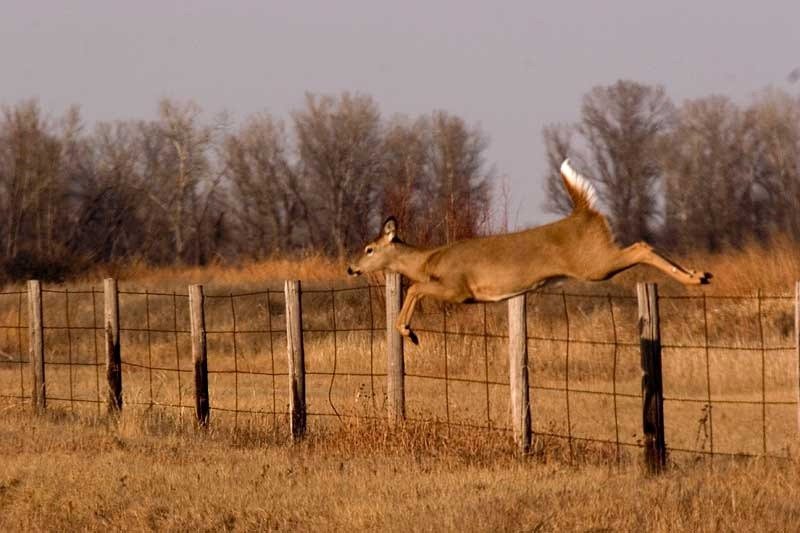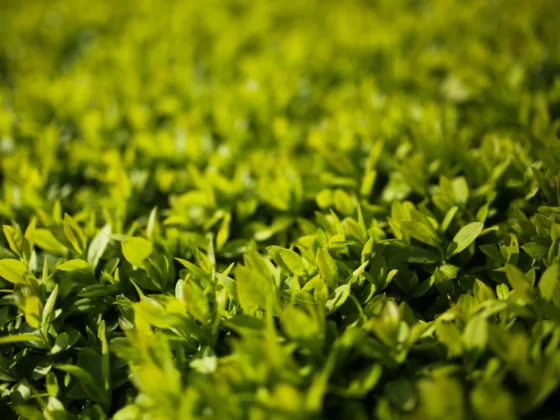Table of Contents Show
Deer are beautiful creatures, but those who live in rural areas know how much damage deer can do to trees, bushes, and perennial plants.
When food is scarce, like other wild creatures, deer will eat whatever they can find in an effort to survive, and deer do not care if they’re destroying private property. Deer can easily do hundreds of dollars in damage to landscaping.

How to Keep Deer Out of Your Garden, Trees, and Bushes
Homeowners often feel helpless to stop deer from destroying their property, but there are ways to control deer and stop them from eating and killing trees, bushes, and perennial plants.
Takeaways
- Deer can do hundreds of dollars in damage to landscaping, but they can be controlled and deterred.
- Repellents, dogs, and fences can all effectively keep deer away from vulnerable plants and trees.
- A chronic problem with deer can indicate a food crisis due to overpopulation.
Read Also:
Fencing
In order to keep deer out of your garden or yard, fencing must be at least 8 feet high. Fencing of this height isn’t always affordable, especially for those with large yards. Fencing just the garden is sometimes more practical.
Consider placing a wire fence above the ground if you don’t want to have to go through a gate to enter your garden. This may sound strange, but deer are primarily jumpers, and they do not like ducking under fences or anything else for that matter. Placing a fence 8 feet above the ground is an effective deterrent. Repellents may be tied to the bottom of the fencing for extra protection.
Shorter electrical fencing may be used to keep deer off your property, but electrical fencing isn’t legal in all locations. Check with your local building department to see if electrical fences are legal in your area. Electrical fencing kits can be found at building supply stores and garden centers.

Did You Know?
Wildlife habitat is often taken over by humans, leaving deer with no where to go. Deer were probably grazing your property long before you ever lived there.
Deer Repellents
Human scent is definitely a deterrent to deer. Placing human hair clippings around gardens, bushes, and trees help keep deer away. Ask your beautician or barber for a bag of hair clippings. He or she will probably be more than happy to fulfill your request.
My neighbor discovered a very effective repellent against deer. He hasn’t had any problems with deer since using strong-scented deodorant soap to keep them away from his fruit orchard. Deodorant soap is safe for the environment because it is biodegradable, soap is generally cheap, and it will not poison or endanger plants or wildlife.
My neighbor drills a hole about a third of the way down the length of the bar of soap. He runs strong twine through the hole and hangs one bar of soap on a low branch of each of his fruit trees.
Commercial deer repellents are available at most garden centers. They can be effective, but they must be reapplied often due to rain and snow, and they cannot be used on food-producing trees and plants.
Dogs
Dog owners are less likely to have problems with deer. Regularly tether your dog near the garden or near vulnerable trees and bushes.

Deer will be aware of the scent and will avoid those areas. If your property is fenced in, provide your dog with proper shelter, and put him on guard duty at dusk, dawn, and during the night. These are the time’s deer are most likely to invade and destroy. Deer do not want confrontations with dogs, and they will soon learn to avoid your property.
Benefits of Natural Pruning
What initially appears to be destroyed by deer often ends up being beneficial to landscaping. Natural pruning and trimming sometimes encourage new growth, and trees and bushes naturally pruned often encourage lush healthy foliage and new growth.
One particularly rough winter, a deer destroyed my ornamental cherry tree. The trunk of the tree was approximately three to four inches in diameter, and a hungry deer took the entire tree, leaving behind a stump about a foot high. I thought for sure the tree was dead. Amazingly, the decapitated tree survived and eventually blossomed into a beautiful flowering tree with a few main trunks. Because a deer trimmed my ornamental cherry tree, the tree turned into what is now a very large and beautiful flowering bush.
Deer also destroyed a young silver maple tree on my property. The initial destruction was short-lived. The tree ended up growing extremely fast after that natural trimming, and the deer actually helped the tree turn into a massive giant over the next few years. The tree that had been pruned by hungry deer grew to be the largest and most favored tree on my property.
The same winter, deer destroyed a few of my neighbors’ small pine trees. The deer literally chewed off main branches. The pine trees survived, and they are a thriving part of a beautiful pine-wooded lot.
When deer have invaded your yard, and trees and bushes appear to be destroyed, don’t be too quick to dig them up and replace them. Give bushes and trees that have been damaged by deer time to recover. Chances are your trees and bushes will thrive to become larger than life.
Deer Overpopulation
If deer destroy your bushes and trees, even when winter has not been exceptionally hard, there could be an overpopulation of deer in your area. Contact the Department of Natural Resources in your state to report the problem. Continuing damage by deer suggests an area food crisis.









